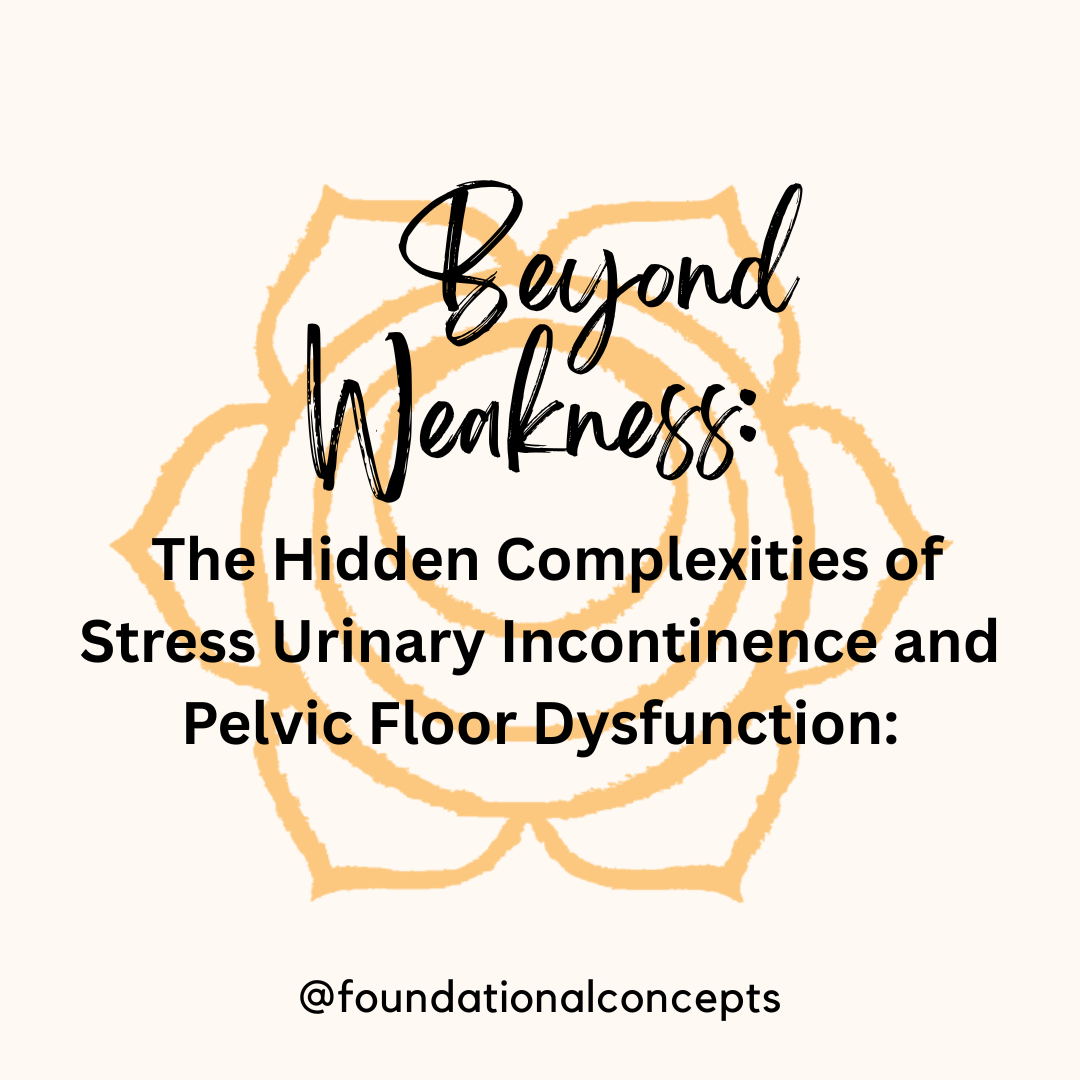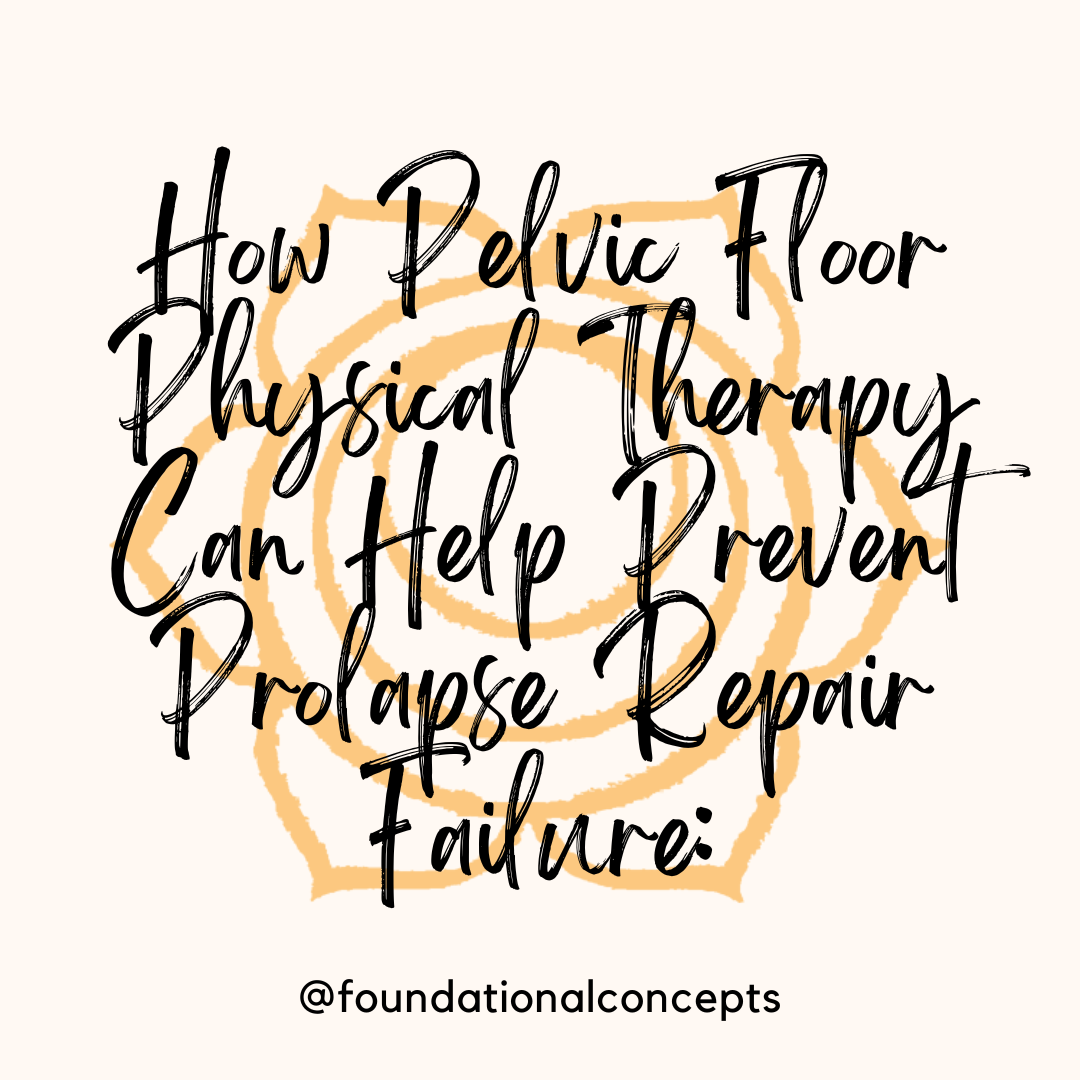
Beyond Weakness: The Hidden Complexities of Stress Urinary Incontinence and Pelvic Floor Dysfunction
Stress urinary incontinence (SUI) is often thought of as a straightforward issue of a “weak pelvic floor. But for many individuals, the cause is far more complex and involves not only pelvic floor weakness but also pelvic floor muscle tightness, which can contribute to other symptoms—including hip pain, low back pain, muscle spasms, and bladder dysfunction.
Understanding this interconnectedness is crucial for both effective diagnosis and treatment. This article explores how tight pelvic floor muscles can contribute to stress urinary incontinence and associated symptoms, and how pelvic floor physical therapy (PFPT) can offer lasting relief through techniques like pelvic floor downtraining, bladder retraining, and improving hip mobility.
Stress urinary incontinence occurs when physical movement or activity—such as coughing, sneezing, laughing, or exercise—puts pressure (or stress) on the bladder, causing involuntary bladder leaking.
Traditionally, SUI has been attributed to a lack of strength in the pelvic floor muscles. However, what’s becoming increasingly clear is that tight or hypertonic pelvic floor muscles can be part of the problem when the muscles are unable to function effectively during pressure-related activities.
This excessive tension can lead to:
- Poor muscle coordination
- Poor neuromuscular control
- Inhibited bladder function
- Trigger points that cause referred pain
One of the key muscles involved in this dynamic is the obturator internus. The obturator internus is a deep hip rotator muscle that forms part of the lateral pelvic wall. While it’s typically associated with hip stability and rotation, it has important relationships with the pelvic floor muscles.

Tightness or dysfunction in the obturator internus can:
- Pull on the pelvic floor muscles, contributing to pelvic asymmetry
- Create referral pain into the hips, groin, buttocks, abdomen, or low back
- Affect the bladder and urethral control, worsening symptoms of SUI
- Lead to muscle spasms or the sensation of pelvic pressure
For many people dealing with SUI, these coexisting issues often go unrecognized.
Pelvic floor tightness can stem from multiple factors:
- Muscle guarding of the hips, abdomen, or pelvic floor
- Overcompensation for a previously weak pelvic floor
- Trauma, such as childbirth or pelvic surgery
- High-impact sports or heavy lifting with poor pressure management
Tight pelvic muscles may seem strong but are often dysfunctional. Instead of engaging appropriately during moments of abdominal pressure (like a sneeze), they may either not activate in time or be fatigued from chronic tension, failing to support the bladder effectively.
This pattern often leads to:
- Urine leakage with effort or movement
- Pain in the hips, back, or tailbone
- Frequent or urgent urination
- Feeling of incomplete bladder emptying
Because the pelvic floor acts like a hammock supporting the bladder, bowel, and uterus, dysfunction in these muscles often causes issues through the core system—which includes the hips, spine, diaphragm, and deep abdominal muscles.
This overlapping pain can further contribute to muscular tightness and increase the body’s stress response—worsening bladder symptoms. This is where pelvic floor physical therapy comes into play to treat the underlying causes of the stress incontinence. Treatments can include:
1. Pelvic Floor Down training
Downtraining is about helping overactive or tight muscles to decrease tension, improve range of motion, and coordinate better with other core muscles. This might include:
- Manual therapy to release trigger points through the hips, abdominal wall, and pelvic floor muscles
- Breathing techniques to improve diaphragm mobility and improve abdominal pressure management
- Rehabilitative ultrasound for visual feedback of the pelvic floor muscle movements
- Guided relaxation or meditation to held calm the nervous system down for decreased muscle activation
2. Bladder Retraining
If bladder urgency, frequency, or leakage is present, bladder retraining is another essential piece. This may involve:
- Timed voiding to re-establish a normal bladder schedule
- Urge suppression techniques (such as diaphragmatic breathing, distraction strategies)
- Tracking fluid intake and output
The goal is to reconnect the brain and bladder and reduce the urgency that often accompanies pelvic floor dysfunction.
3. Hip Mobility and Strength
To support the pelvic floor and reduce muscle tension, PFPT will also address hip mobility and postural alignment. This includes:
- Gentle hip stretches (especially external rotators and adductors)
- Core and glute strengthening
- Functional movement retraining
Improving hip mobility reduces strain on the pelvic floor and helps restore pain-free movement in daily life.
If you’re experiencing:
- Leaking urine when you laugh, sneeze, or exercise
- Pelvic pain, hip tightness, or low back discomfort
- Difficulty starting or stopping the flow of urine
- Muscle spasms in the pelvic or hip area
- A sense of pressure or heaviness in the pelvis
…it may be time to consult a pelvic floor physical therapist. Early intervention can prevent symptoms from worsening and significantly improve your quality of life.
Stress urinary incontinence is more than just a bladder issue—it’s often a whole-body imbalance rooted in the relationships between muscles, connective tissue, and nerves. Tight pelvic floor muscles, can create a cascade of symptoms that include hip pain, low back pain, and muscle spasms.
But the good news is that these patterns can be treated successfully. Through pelvic floor physical therapy, patients can experience lasting relief with downtraining, bladder retraining, and improved hip mobility.
Disclaimer: This blog is here for your help. It is the opinion of a Licensed Physical Therapist. If you experience the symptoms addressed you should seek the help of a medical professional who can diagnose and develop a treatment plan that is individualized for you.









